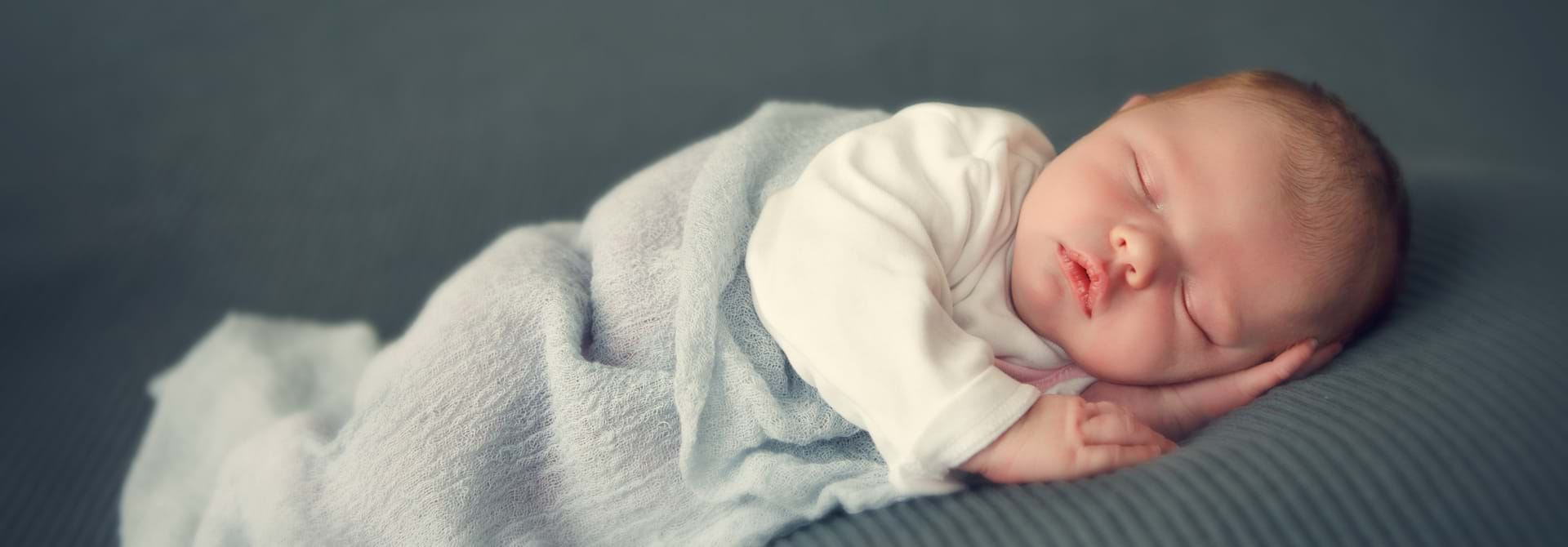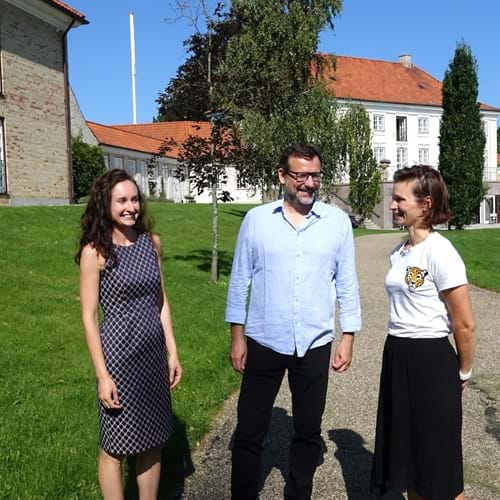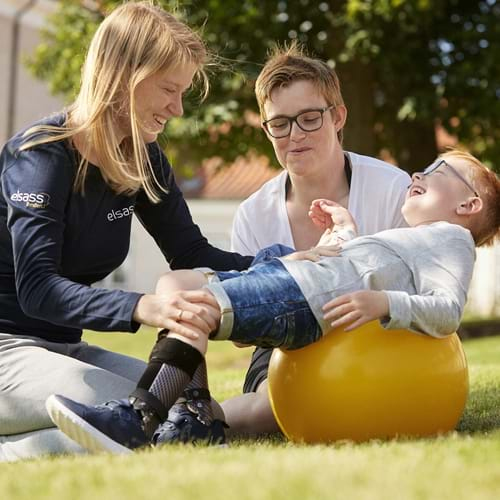EU Project to Strengthen Intervention for Infants with CP
An ongoing European research project aims to identify children at risk of cerebral palsy soon after birth in order to initiate efficient help for the children and their families as early as possible.
Research shows that early and targeted intervention is essential to create the best conditions for children with cerebral palsy (CP). Nevertheless, in many cases, children with CP are not identified until they are older than one year. The ongoing EU-funded research and implementation project, BornToGetThere, of which the Elsass Foundation is a part, aims to change this.
"In Denmark and several other places in Europe, we are challenged by the fact that children with few and unclear signs of of CP are identified very late. We therefore lose the opportunity to take action at an early stage, which is essential to strengthen the child's motor and cognitive development. We need to be better at identifying children who need intervention," says PhD Maria Willerslev-Olsen, a researcher at the Elsass Foundation.
She is project coordinator for the Danish part of the EU project, which in addition to Denmark includes the Netherlands, Italy, Georgia, Sri Lanka and Australia.
It all started in Italy
The project initially started in northern Italy with project manager and PhD Olena Chorna and her husband, MD, PhD Andrea Guzzetta, in charge. Both are at the forefront of research in the field of cerebral palsy.
They initiated the project to bridge the gap between knowledge and practice within existing health and care systems on an international level.
"We want to equip clinicians with the knowledge, skills and resources to provide the best evidence-based interventions for every family living with CP – regardless of their location. The treatment should be individualised to the needs of the infant and the family, but based on specific, validated assessments and intervention recommendations," says Andrea Guzzetta, a professor at the University of Pisa and head of SMILE (Stella Maris Infant Lab for Early Intervention).
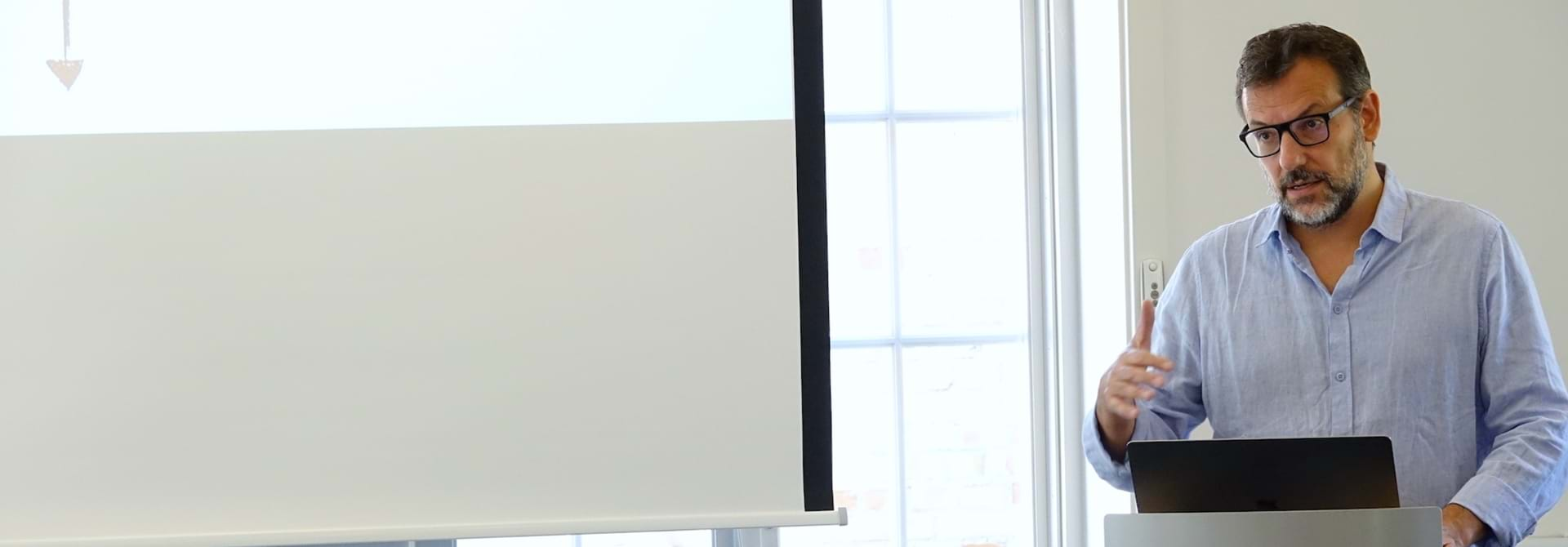
Andrea Guzzetta gives a presentation on the project for professionals in the Elsass Foundation in August 2021
International guidelines
The project is based on international guidelines and recommendations for early detection of children at risk of CP, which were drawn up following several years of research. Professionals around the world agree that these three components can identify the possible risk of CP in infants.
"There is now an international consensus that early detection can be done effectively through a combination of movement analysis (General movement; GMA), the neurological HINE study and MRI scanning," Guzzetta said, explaining further:
"GMA is used to examine the spontaneous movement patterns of infants to provide a predictive assessment in relation to CP. MRI is an objective measuring instrument that provides an overview of what the brain looks like. It is an important tool in understanding potential anatomical brain damage, where HINE provides a snapshot of the child's neuromotor movement."
The three components complement each other, providing much-needed knowledge – and are successful when used together. According to Guzzetta, they should be used simultaneously, as much as possible, when the baby is 3-4 months old.
Implementation in practice
Despite the fact that there are now international guidelines in this area, it is not easy to get them implemented in practice in Denmark and in other parts around the world.
Therefore, according to Maria Willerslev-Olsen, it is no coincidence which countries have been selected to be part of the project.
"The countries were selected because of their different organization and level of health care. There is a big difference in what is possible in low-income countries such as Georgia and Sri Lanka as compared to high-income countries such as the Netherlands and Denmark. Traditions, culture and priorities also play a role in the way the different health care systems are organized, and this provides different challenges in implementation of the international guidelines" she said.
The purpose of BornToGeTthere is to identify these challenges in the health care systems of the different countries.
Cooperation is essential
Maria Willerslev-Olsen emphasised that cooperation between the countries is essential.
"Our combined knowledge, experience and data will strengthen the cooperation. This can generate greater knowledge and a common understanding of the challenges that prevent the implementation of the international guidelines," Willerslev-Olsen said.
In this context, the Elsass Foundation is responsible for developing a shared database in which the countries can enter data. The project managers are also meeting continuously across the countries and cities to share knowledge and exchange experiences.
Most recently, Andrea Guzzetta and Olena Chorna were in Denmark in August 2021 to teach and give presentations to the Elsass Foundation's professionals and other clinicians in the field of CP.
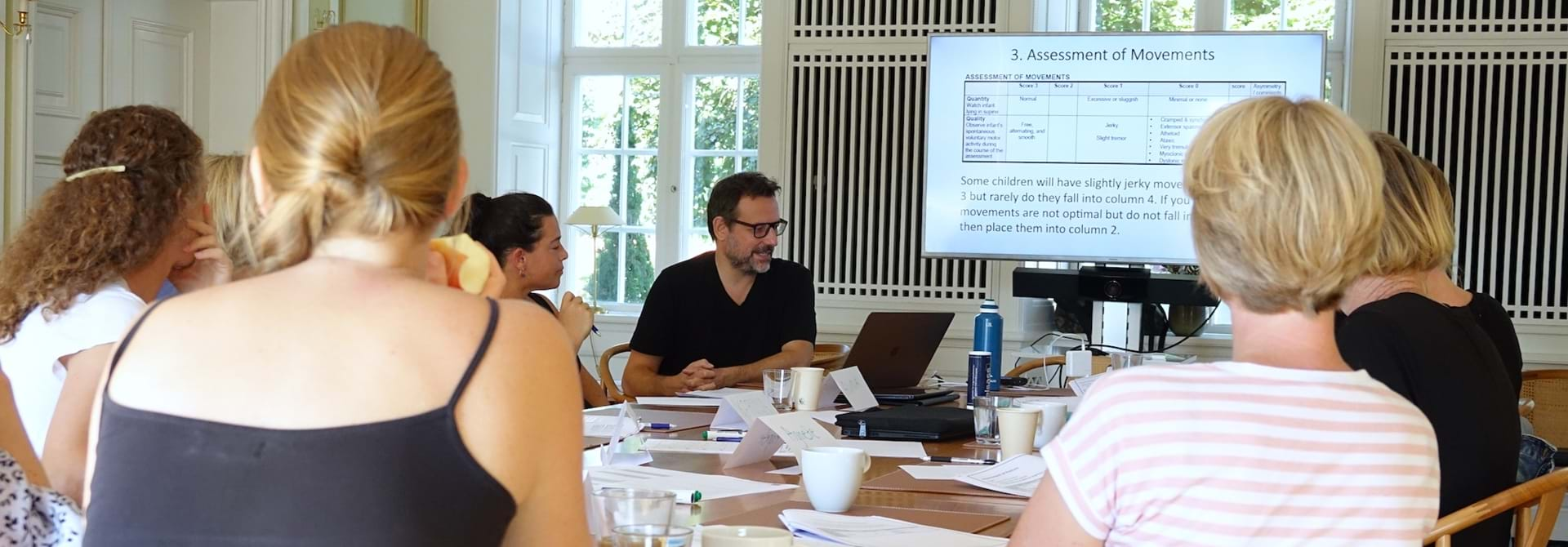
Andrea Guzzetta teaches General Movement (GMA).
We will pave the way for other countries
In the long term, the ambition of the EU project is to pave the way for other countries to implement the guidelines.
This will strengthen intervention for children with CP worldwide.
"This opens up the possibility that children who are at high risk of CP can be identified as early as the age of 3-4 months. And this means that already at 3-4 months of age, something can be done to help those children and their families," Maria Willerslev-Olsen said in conclusion.
The EU BorneToGetThere Project got started in January 2020 and will run for 4 years.
